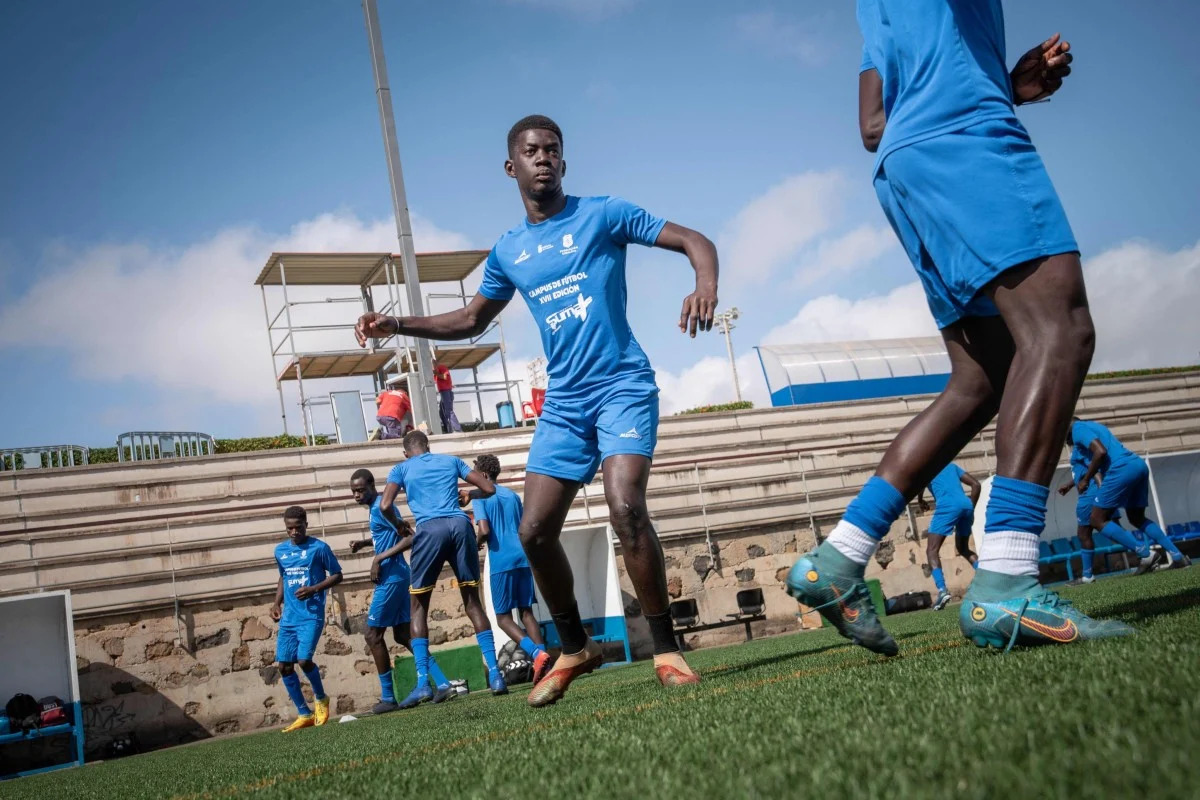
Did you know the Canary Islands have a rich football history? This Spanish archipelago, known for its stunning beaches and volcanic landscapes, also boasts a vibrant football culture. From producing world-class players to hosting thrilling local derbies, the Canary Islands' football scene is anything but ordinary. Clubs like UD Las Palmas and CD Tenerife have passionate fan bases and storied pasts. Football here isn't just a sport; it's a way of life. Whether you're a die-hard fan or just curious, these 22 facts will give you a deeper appreciation for Canary Islands football. Ready to kick off? Let's dive in!
Key Takeaways:
- Canary Islands football is a unique blend of Spanish and African influences, creating a distinctive and competitive football culture across the seven main islands.
- The rivalry between CD Tenerife and UD Las Palmas is intense, attracting over 30,000 spectators and showcasing the passion and pride of the islands.
Canary Islands Football: A Unique Blend of Cultures
The Canary Islands, known for their stunning landscapes and vibrant culture, also boast a rich football history. This unique blend of Spanish and African influences has created a distinctive football culture that is both fascinating and competitive.
-
The Canary Islands consist of seven main islands, each with its own football clubs and leagues.
-
Football was introduced to the Canary Islands in the early 20th century by British sailors and merchants.
-
The first official football club in the Canary Islands was Club Deportivo Tenerife, founded in 1912.
-
Unión Deportiva Las Palmas, another major club, was established in 1949 and quickly became a rival to CD Tenerife.
The Rivalry: CD Tenerife vs. UD Las Palmas
The rivalry between CD Tenerife and UD Las Palmas is one of the most intense in Spanish football. Known as the "Canarian Derby," it captures the passion and pride of the islands.
-
The first Canarian Derby took place in 1950, ending in a 2-2 draw.
-
Matches between these two clubs often attract over 30,000 spectators, showcasing the local enthusiasm for football.
-
The Canarian Derby is not just about football; it also highlights the cultural and social differences between the islands of Tenerife and Gran Canaria.
-
Both clubs have experienced periods of success, with CD Tenerife reaching the semi-finals of the UEFA Cup in 1997.
Notable Players from the Canary Islands
The Canary Islands have produced several talented footballers who have made their mark both locally and internationally.
-
David Silva, one of Spain's most celebrated midfielders, hails from Arguineguín, Gran Canaria.
-
Pedro Rodríguez, known simply as Pedro, was born in Santa Cruz de Tenerife and has played for top clubs like FC Barcelona and Chelsea.
-
Juan Carlos Valerón, another Gran Canaria native, enjoyed a successful career with Deportivo La Coruña and the Spanish national team.
-
Vitolo, a versatile winger, started his career with UD Las Palmas before moving to Sevilla FC and Atlético Madrid.
Football Infrastructure in the Canary Islands
The Canary Islands have invested significantly in football infrastructure, ensuring that the sport continues to thrive.
-
Estadio de Gran Canaria, home to UD Las Palmas, has a seating capacity of over 32,000.
-
Estadio Heliodoro Rodríguez López, where CD Tenerife plays, can accommodate around 22,000 fans.
-
The islands have numerous training facilities and youth academies, nurturing the next generation of football talent.
-
Local governments and private sponsors often support football initiatives, reflecting the sport's importance to the community.
The Role of Football in Canarian Society
Football in the Canary Islands is more than just a sport; it plays a crucial role in the social fabric of the islands.
-
Football matches are major social events, bringing together people from different backgrounds and fostering a sense of community.
-
Many local festivals and celebrations include football tournaments, highlighting the sport's cultural significance.
-
Football clubs often engage in charitable activities, supporting local causes and promoting social responsibility.
-
The sport has also helped bridge the gap between the islands and mainland Spain, fostering a sense of national unity.
Future Prospects for Canary Islands Football
The future of football in the Canary Islands looks promising, with ongoing investments and a steady stream of young talent.
-
Youth academies continue to produce talented players who are making their way into top European leagues.
-
Efforts to modernize stadiums and training facilities are ongoing, ensuring that the Canary Islands remain a hub for football excellence.
The Final Whistle
Canary Islands football is more than just a game. It’s a blend of history, culture, and passion. From the early days of British influence to the rise of local clubs like UD Las Palmas and CD Tenerife, the sport has woven itself into the fabric of island life. The unique style of play, the fierce local rivalries, and the dedicated fan base make it special. Players from the islands have made their mark on the global stage, showcasing their talent and spirit. Whether you’re a die-hard fan or just curious, the Canary Islands offer a rich football heritage worth exploring. So next time you think of the Canary Islands, remember it’s not just about beaches and volcanoes. Football plays a huge role in the heart of these islands.
Frequently Asked Questions
Was this page helpful?
Our commitment to delivering trustworthy and engaging content is at the heart of what we do. Each fact on our site is contributed by real users like you, bringing a wealth of diverse insights and information. To ensure the highest standards of accuracy and reliability, our dedicated editors meticulously review each submission. This process guarantees that the facts we share are not only fascinating but also credible. Trust in our commitment to quality and authenticity as you explore and learn with us.
